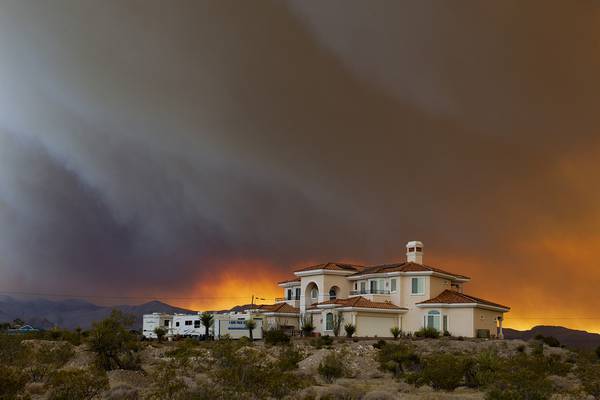Crews on Wednesday made progress containing the wildfire burning near Mount Charleston. And unless they hit any snags, the blaze is expected to be fully contained by early Sunday, according to the U.S. Forest Service.
The inferno, dubbed the Mahogany Fire, was 40% contained as of Wednesday evening, compared with 10% a few hours earlier, the forest service reported on its incident website.
No injuries have been reported.
Firefighters Wednesday continued to dig firebreaks, and helicopters dropped water from massive buckets, officials said. The burn area — which was sparked Sunday afternoon near the Mahogany Grove Campground, a short distance from Deer Creek Road — stretches 2,794 acres.
Air and ground operations, currently being handled by 385 personnel members, were expected to continue for the time being, officials said.
The origin of the fire, which quickly grew from 15 acres to hundreds of acres, was believed to be human, said officials, not expounding.
Strong winds grounded firefighting aircraft until Monday, and have been used since.
Wednesday was dry and windy, and the valley remains under a red flag warning, increasing fire risk, officials said. Wind around the fire area gusted 25 to 30 mph, and humidity was low.
The incident website provides a projected overlook for the next 72 hours:
Flames were expected to continue to burn overnight.
Lower wind gusts “will limit the fire spread on all sides of the fire,” in the next 24 hours.
Higher temperatures in the next 72 hours will “increase fire behavior,” but the spread will be limited.
Wednesday marked the seventh anniversary of the start of the Carpenter 1 Fire on Mount Charleston. That wildfire, sparked by lightning, burned for about six weeks, charring nearly 30,000 acres.

